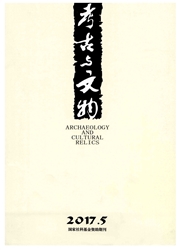

 中文摘要:
中文摘要:
本文主要研究我国古文献记载的编钟编列与等级,将考古出土的编钟资料与文献记载对比,认为《周礼》记载编钟的“乐县”形式是有的;但是《周礼》记载编钟的“乐县”等级与考古发掘所见到编钟组合形式不完全符合。本文论述了产生这种差别的原因,认为《周礼》所载是战国以后的理想化模式,不是西周时期的礼制。编钟的组合规制与贵族的财力、国力有密切关系。随着社会的进步,音乐的发展,编钟的组合形式也变得更为复杂。
 英文摘要:
英文摘要:
This article discusses the chime-bell assemblages and associated hierarchy recorded in ancient textual records. The author compares unearthed chime-bells with relevant textual records. This article suggests that the 'suspended music' system mentioned in Rites of Zhou did exist in ancient China. Nonetheless, the hierarchical system related to the 'suspended music' in texts does not exactly match with the pattern seen in archaeological records. The underlying reason of this phenomenon is that the system in the Rites of Zhou reflects an idealized system emerging after the Warring States period rather than an accurate record of the Western Zhou system. In addition, changes of the chime-bell assemblages are closely related to the changing aristocratic financial conditions and state power, The assemblages also became more complex alongside the improvement of social development and musical system.
 同期刊论文项目
同期刊论文项目
 同项目期刊论文
同项目期刊论文
 期刊信息
期刊信息
